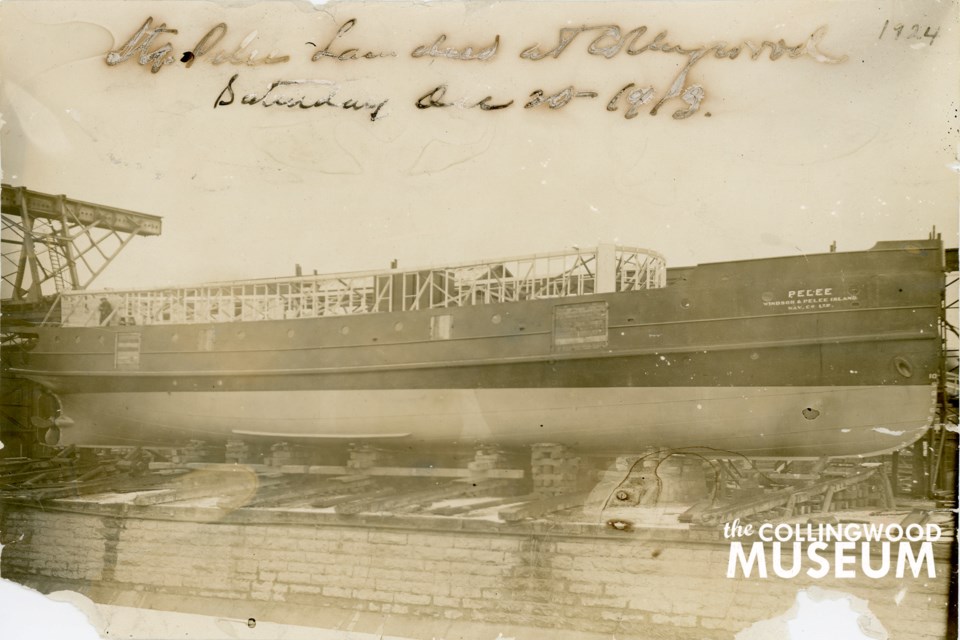This ongoing series showcases historic photos in the Collingwood Museum collection, with research and writing by Melissa Shaw, the museum supervisor.
On December 20, 1913, the steamer Pelee (Hull 41) was launched into the flooded basin of Dry Dock No. 1 (also known as the Queen’s Dry Dock) in Collingwood’s harbour.
This original dry dock is located at the northernmost point of St. Paul Street and today exists in a permanently flooded state. Dry Dock No. 1
was constructed of limestone in 1883 and its defining limestone walls are visible just beneath the completed ship in today’s featured photograph.
The completion of Dry Dock No. 1 in 1883 allowed for the simultaneous tasks of ship repair and ship construction; while ships were repaired in the dry dock, new ships could be constructed along the building berth that ran along the edge of the dry dock’s wall. A second dry dock was added to the shipyards’ operation in 1909 at the northernmost point of Hurontario Street.
To learn more about Collingwood’s dry docks, please visit the newly installed interpretive sign at the Hurontario Street Basin along Side Launch Way (see photograph).
Despite being launched in December 1913, Pelee remained in Collingwood’s harbour until its departure on April 20, 1914, for service between Kingsville, Leamington, and Pelee.
A photograph dated April 15, 1914, shows Pelee on its trial run on Georgian Bay before being released to its owner, the Windsor and Pelee Shipping Company.
Each ship constructed in Collingwood had to meet specific performance measures before being released.
A leatherbound photograph album in the Collingwood Museum’s collection documents the Pelee’s progress between September 15, 1913, and April 4, 1914 in 23 black and white photographs.
The leatherbound album was compiled by the Collingwood Shipbuilding Company and later donated to the museum by the Collingwood Shipyards. Pelee’s proximity to Dry Dock No. 1 is captured in one of the album’s photographs, dated December 20, 1913.
The steamer Pelee was built as a small passenger and vehicle ferry but is also reported to have transported tobacco and produce between its ports of call. On Fridays, the ferry serviced Sandusky, Ohio, on the American side of Lake Erie. The ship persisted through a grounding at Leamington in 1947
and another at Pelee Island in 1949.
In 1950, vandals attempted to sink the vessel at Leamington. The vessel was discovered with a metre of water in the hull which was subsequently pumped out.
In 1960, Pelee was replaced by the Pelee Islander.
In 1963, the Pelee broke loose from its mooring and drifted aground for a final time. Three years later, the vessel was sold for scrap and broken up at Port
Stanley. Although the Pelee no longer plies the Great Lakes, its story continues to be preserved at the Collingwood Museum.
If you have any memories or stories to share about the steamer Pelee, please contact Collingwood Museum staff.



